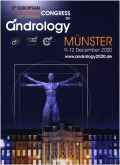- 钛学术文献服务平台 \
- 学术期刊 \
- 医药卫生期刊 \
- 外科学期刊 \
- 亚洲男性学杂志(英文版)期刊 \
RELAXATION OF RABBIT CAVERNOUS SMOOTH MUSCLE TO 17β-ESTRADIOL: A NON-GENOMIC, NO-INDEPENDENT MECHANISM
RELAXATION OF RABBIT CAVERNOUS SMOOTH MUSCLE TO 17β-ESTRADIOL: A NON-GENOMIC, NO-INDEPENDENT MECHANISM
基本信息来源于合作网站,原文需代理用户跳转至来源网站获取
摘要:
Aim: To investigate whether estrogen was involved in relaxation of rabbit cavernous smooth muscle. Methods: Relaxation response of the rabbit cavernous smooth muscles to 17β-estradiol (0.3, 3, 30 and 300 nmol/L) were observed in vitro. The response of the muscle strips to estrogen after incubation with either actinomycin D (10μmol/L) or L-NAME (10μmol/L) were also evaluated. Inside-out mode of patch clamp in a single smooth muscle cell was applied to investigate the Maxi-K channel activities. Results: Estrogen caused a dose-dependent relaxation of the strips precontracted with norepinephrine. The maximal response was noted about 10 minutes after treatment. The estrogen-induced relaxation was prevented by neither actinomycin D nor L-NAME, suggesting that the response was not mediated by gene transcription or nitric oxide (NO). Application of 17β-estradiol increased the Maxi-K channel activities. Conclusion: 17β-estradiol may be involved in relaxation of rabbit cavernous smooth muscles via a non genom

推荐文章
The importance of non-carbonate mineral weathering as a soil formation mechanism within a karst weat
Critical zone
Chemical weathering
Karst
Desertification
Guizhou Province
L-smooth半预开集与L-smooth半预连续
L-smooth拓扑空间
L-smooth r-半预开集
L-smooth半预连续映射
基于Rabbit 3000的BootLoad分析
BootLoad
MMU
MIU
内存映射
Mechanism of accelerated dissolution of mineral crystals by cavitation erosion
Cavitation erosion
Mineral dissolution
Plastic deformation
Stepwave
Gibbs free energy
内容分析
关键词云
关键词热度
相关文献总数
(/次)
(/年)
文献信息
| 篇名 | RELAXATION OF RABBIT CAVERNOUS SMOOTH MUSCLE TO 17β-ESTRADIOL: A NON-GENOMIC, NO-INDEPENDENT MECHANISM | ||
| 来源期刊 | 亚洲男性学杂志(英文版) | 学科 | 医学 |
| 关键词 | |||
| 年,卷(期) | 2004,(2) | 所属期刊栏目 | |
| 研究方向 | 页码范围 | 127-131 | |
| 页数 | 5页 | 分类号 | R33 |
| 字数 | 语种 | 中文 | |
| DOI | |||
五维指标
引文网络
引文网络
二级参考文献 (0)
共引文献 (0)
参考文献 (0)
节点文献
引证文献 (0)
同被引文献 (0)
二级引证文献 (0)
2004(0)
- 参考文献(0)
- 二级参考文献(0)
- 引证文献(0)
- 二级引证文献(0)
引文网络交叉学科
相关学者/机构
期刊影响力
亚洲男性学杂志(英文版)
主办单位:
中国科学院上海药物研究所
出版周期:
双月刊
ISSN:
1008-682X
CN:
31-1795/R
开本:
大16开
出版地:
上海市太原路294号16号楼302室
邮发代号:
4-648
创刊时间:
1999
语种:
eng
出版文献量(篇)
2771
总下载数(次)
1
总被引数(次)
9935
期刊文献
相关文献
推荐文献
- 期刊分类
- 期刊(年)
- 期刊(期)
- 期刊推荐
亚洲男性学杂志(英文版)2022
亚洲男性学杂志(英文版)2021
亚洲男性学杂志(英文版)2020
亚洲男性学杂志(英文版)2019
亚洲男性学杂志(英文版)2018
亚洲男性学杂志(英文版)2017
亚洲男性学杂志(英文版)2016
亚洲男性学杂志(英文版)2015
亚洲男性学杂志(英文版)2014
亚洲男性学杂志(英文版)2013
亚洲男性学杂志(英文版)2012
亚洲男性学杂志(英文版)2011
亚洲男性学杂志(英文版)2010
亚洲男性学杂志(英文版)2009
亚洲男性学杂志(英文版)2008
亚洲男性学杂志(英文版)2007
亚洲男性学杂志(英文版)2006
亚洲男性学杂志(英文版)2005
亚洲男性学杂志(英文版)2004
亚洲男性学杂志(英文版)2003
亚洲男性学杂志(英文版)2002
亚洲男性学杂志(英文版)2001

 免费查重
免费查重










